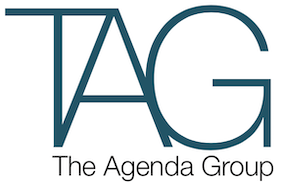Anyone with the slightest interest in the transport sector knows that State Governments around Australia face enormous challenges paying for transport infrastructure projects. Yet, even before grappling with the challenges of finding funding, there is the basic challenge of selecting which are the most worthwhile projects to pursue.
A few years ago, many in the sector seemed to have the naive view that increased Commonwealth involvement in both selecting and funding projects would solve many of the existing problems. There seemed to be an implicit assumption that an independent Commonwealth body would be able to act in the national interest and display the Wisdom of Solomon. The reality has been somewhat more prosaic. While Infrastructure Australia (IA) has done some useful work, states have realised that not only will their pet projects be competing against other jurisdictions, but also that the Commonwealth might assess priorities differently.
Of course, in theory, cost-benefit analyses done by Federal and State organisations would produce identical results, but for a variety of reasons this will rarely happen in practice. The dispute between the Federal Labor Government and the new Liberal Government in New South Wales over competing rail projects in Sydney is a classic example of how opinions can differ about what is the best project to pursue.
Competition between rail projects has a certain novelty. For decades, there was much debate between roads organisations and public transport activists about which of their modes needed more funding but, in recent years, there seems to have been almost as much internal debate about which public transport projects should be funded. Some prominent public transport activists have been critical of the Regional Rail Project in western Melbourne, the project which received the lion’s share of the first round of IA funding.
In Sydney, even those keen to see an increase in public transport services to the growing outer north-west of Sydney have differing views as to how this should be best delivered.
This was highlighted at a recent transport conference in Sydney. Delegates were given a detailed presentation on the proposed delivery of North West Rail by Rodd Staples, Project Leader, North West Rail Link. Yet, even before Staples spoke, earlier speakers had provided alternative visions. First, there was the suggestion that, rather than providing a path into the Sydney CBD via the North Shore, NW Rail should instead be directed towards Parramatta. Then, the argument was presented that the best way to provide top quality public transport to the North West was to flood the corridor with buses.
In the same week that the conference was being held, the Sydney Morning Herald had a front-page splash headlined “Paris-style train plan for city”. This outlined one vision of how a metro-style operation could work in Sydney, but again others have produced different models. The metro concept was also a centrepiece of the Transport Plan released by the previous Victorian Labor Government in 2008. It proposed a metro to relieve the growing congestion caused by the fact that rail patronage in Melbourne has almost doubled in recent years. The Baillieu Government is still pondering whether this is a proposal which it wants to pursue or whether, for $12 billion, other alternatives might be more worthwhile.
State Governments have a difficult challenge. If they are going to spend $8 billion on North West Rail or $12 billion on a metro in Melbourne, they would want to be sure the projects stack up. It just underlines the fact that of all the skills political decision-makers require good judgement would always be top of the list.
